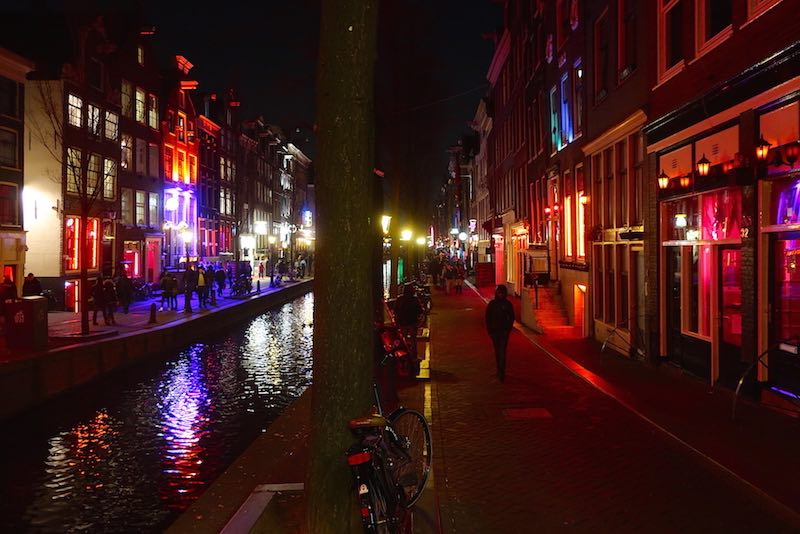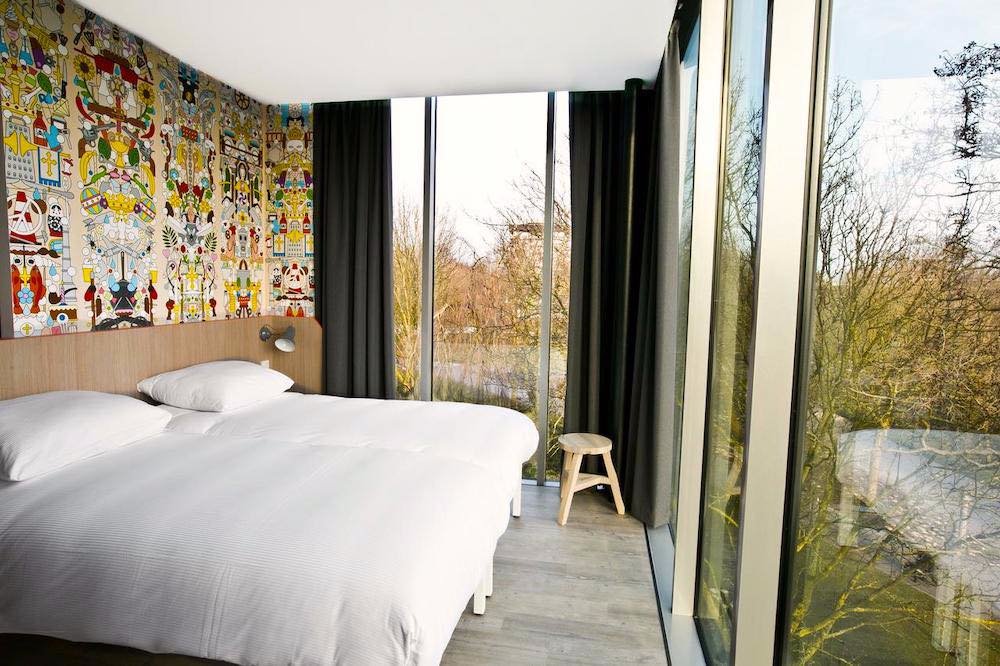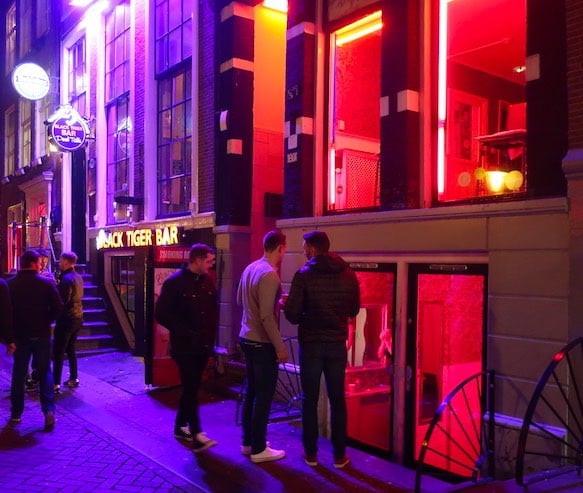Sex Workers Want To Keep Working in Amsterdam's Red Light District
Posted on: Oktober 1, 2024

Sex Workers in Amsterdam Do Not Want To Work Elsewhere
Sex workers want to stay in Amsterdam Red Light District, says interest group Red Light United run by Sexarbeiterinnen.
Sex workers do not want the red light windows to be moved to other parts of Amsterdam. They want to stay where they are, in the current Red Light District area.
90% of 170 Sex Workers Want To Work Amsterdam Red Light District
This is the conclusion of a study done by Red Light United, a new interest group formed by window prostitutes in the Red Light District.
Amsterdam Red Light District has 292 window brothels and approximately 375 sex workers.
Red Light United surveyed 170 of them and concluded that at least 90% of the 170 sex workers want to work in the Red Light District of Amsterdam.
As far as they are concerned, there should be more window brothels in the Red Light District, instead of less.
Red Light United publishes these results in response to the four scenarios that Amsterdam’s mayor Femke Halsema presented today to improve the “unacceptable” situation in the Red Light District.
4 Prostitution Scenario’s In Amsterdam

Sex workers like to have more Amsterdam brothels.
Femke Halsema; Green Left party (GroenLinks) member and Amsterdam’s first female mayor has proposed four different scenario’s for prostitution in Amsterdam:
- The introduction of a display ban; the curtains on the Red Light District will close and Sexarbeiterinnen will no longer be visible for the public. The window brothels will be changed into private brothels.
- Window prostitution disappears from the Red Light District and goes to another part of the city.
- A part of the window brothels will be moved to another part in Amsterdam.
- More window brothels in the Red Light District.
“Sex Workers Are People & They Are Entitled To A Workplace”

The mobile numbers of brothel operators are shown on the windows.
Proud, another Dutch sex work organisation, is very skeptical about the mayor’s debate about the future of Amsterdam Red Light District.
“No way in hell!”, thought Foxxy, who’s a sex worker herself, when she read the mayor’s plans
“Sex workers are people and they are entitled to a workplace! Relocating those workplaces is not an option because then the customers will not know where to find the sex workers. Will Halsema also organise bus-trips for them to the western port section in Amsterdam?”
Entsprechend Foxxy, sex workers who stand behind the windows in Amsterdam’s Red Light District have consciously opted for this form of sex work.
“We believe that it should remain as it is, on top of that the municipality should make it completely legal for sex workers to work more easily from home.“
Entrepreneurs and brothel-operators in the Red Light District also opt for more window brothels instead of less.

Amsterdam’s most narrow alley has currently nine window brothels.
“I’m not so much in favour of extra windows brothels, but about the spreading out of visitors that results from this,” says Masten Stavast of Agapi, a company that rents out a few dozen window brothels in Amsterdam Red Light District.
“Currently, it’s all happening in an area that’s too small.”
More Window Brothels Decrease Pressure In Alley’s

Cor van Dijk is chairman of a the Red Light District entrepreneurs association.
Cor van Dijk, chairman of the Red Light District entrepreneurs association called ‘Ondernemersvereniging Oudezijds Achterburgwal‘, agrees.
“Many window brothels have been removed because of a gentrification program called Project 1012; the previous Red Light District-approach of the local government to change De Wallen neighborhood.
Those were precisely the window brothels in the alleys, where customers still had a certain anonymity,” he says.
“If more windows brothels are added, that will spread the number of people over the entire area and decreases pressure points in certain alleys.
We do not think there have been more tourists in the Red Light District during the recent years, but the City of Amsterdam just compressed the same number of people into a smaller area.”
Sex Workers Earn Less Due To The Change Of Visitors

Mother and daughter walk having a wonder around in Amsterdam’s Red Light District.
The sex workers indicate in research done by Red Light United that they earn less.
According to them, that’s not because of mass tourism, but because of the type of public walking around the Red Light District: backpackers and families with children.
Brothel-operator Stavast is not interested in closed curtains in Amsterdam’s Red Light District, with which the Sexarbeiterinnen disappear from the sight of tourists.
“That is not the intention. On the contrary, the ladies earn from tourists who pass by.
Amsterdam Red Light District Social Control Ensures Safer Area

A man negotiates at a window brothel in Amsterdam’s Red Light District.
According to Cor van Dijk – chairman of Amsterdam Red Light District Entrepreneurs Association, relocating window brothels to other parts of Amsterdam is not a good option.
“Amsterdam Red Light District and sex work belong to each other.“
According to him, the concentration of sex work in the Red Light District has one great advantage in that there is a lot of social. This increases the safety of sex workers.
“No better control than social control!“
Understanding Intimate Encounters in Holland
In the context of the ongoing discussions about the future of Amsterdam Red Light District, it’s interesting to explore how the dynamics of the sex industry might evolve.
As we consider the preference of sex workers to stay in the district, an exploration of how these changes might affect those looking for a sex date becomes relevant.
Will the demand for such encounters shift with the potential changes in the district’s landscape, or will it remain a cornerstone of Amsterdam’s unique cultural and social fabric?
For a deeper insight into this aspect, learn more about it in our detailed article on sex dating.
(This article was translated from the Amsterdam based daily-newspaper Het Parool)
ALSO READ:
13 Amsterdam Red Light District Facts
15x Must See in Amsterdam Red Light District
Decriminalisation Prostitution in the Netherlands








[…] the city center even sex workers don’t like him. A research by the union Red Light United show that about 90 percent of the neighborhood’s 170 sex workers want to continue working there. […]
[…] According to a lobby group known as Red Light United, 90 per cent of the 170 female sex workers surveyed wanted to continue working in their current […]